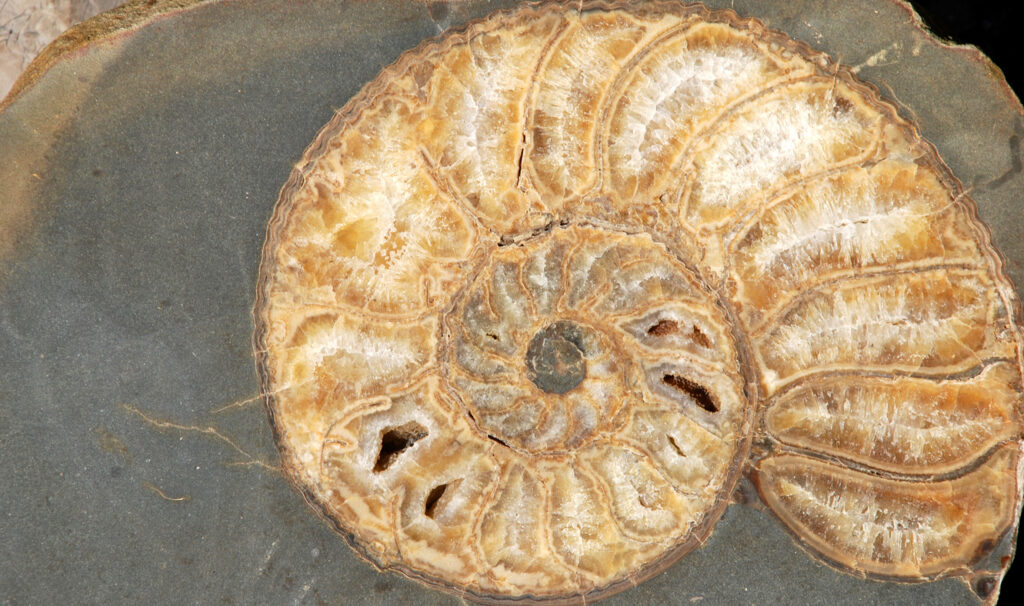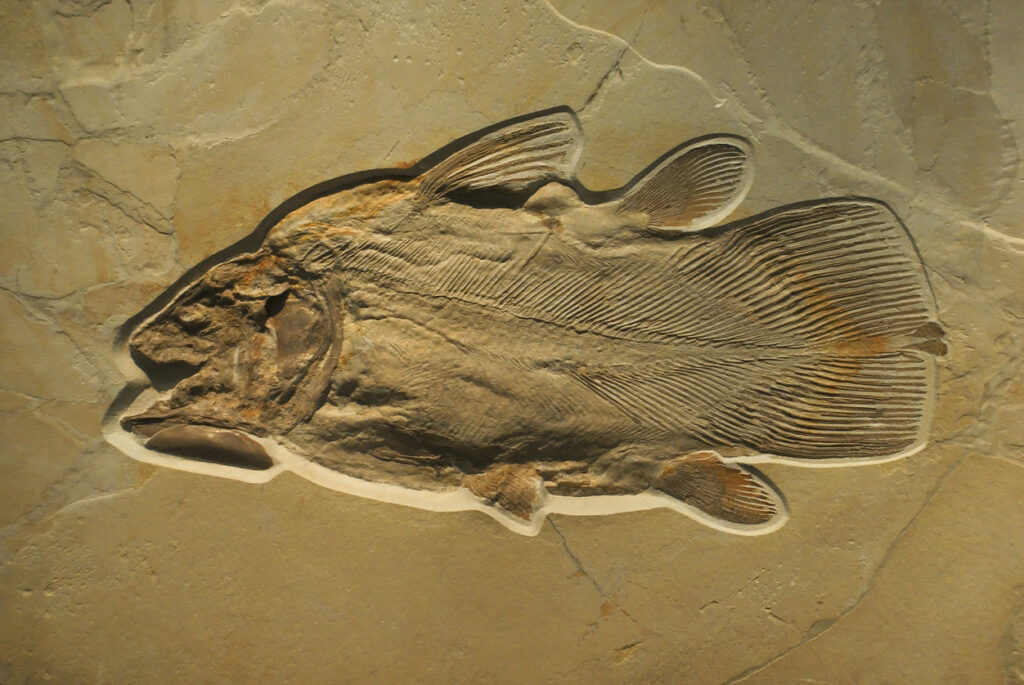They’ve been around for hundreds of years and give scientists and researchers huge insights into the creation and evolution of animals – both past and present. Through studying fossils and old skeletons, we can study the lives of creatures that lived hundreds – even thousands! – of years ago.How do you think we know so much about dinosaurs? They haven’t walked the earth since 65 million years ago, yet we know about their lives, their diets, and even how they might’ve looked.Fossils are fascinating, and there’s a lot to learn about them, so we thought we’d give you the lowdown. It’s Fossils 101 with Deep Sea World! Keep reading…
What are fossils?
Fossils are the preserved remains or impressions of the remains of animals, humans, or plants. Fossils can be found in rock, wood, amber, and other hard substances. Fossils help palaeontologists – people who study the history of life – to learn about and tell the story of the past.
Fossils aren’t just beautiful to look at, they’re an incredible snapshot of how the world was many millions of years ago. The preservation and study of these artefacts allow scientists to further our understanding of how life on Earth has developed and potentially fathom the direction that life on Earth might go in the future.
How many different types of fossils are there?
There are four main types of fossils. Here’s how they are classified:
Mold fossils
These are the preserved remains of a prehistoric organism. Soft tissue usually disintegrates so the two main examples of body fossils are bones and teeth, which can survive for thousands of years. Animals with softer skeletons – like insects – are less likely to remain whole, unless they’re embalmed in hardened tree sap, also known as amber.

Molds and casts
Mold fossils are imprints of plant and animal remains. Casts are the fossils that form when those imprints become filled with sediment, forming the inverse shape of the imprint.
Permineralisation and petrification
If an organism’s remains are suspended in groundwater for an extended period of time, they may dissolve. If this happens, the original materials are replaced by minerals like calcite, iron and silica. This is called permineralisation and forms a fossil that is identical in shape to the original but differs in composition.When the organic matter is completely replaced by minerals, it turns to stone. This is called petrification, and the fossil is an exact replication of the original.
Footprints and trackways
These types of fossils allow us to look back at the behaviours and activities of ancient creatures. Footprints and trackways harden through mud and become known as trace fossils. It can show how a creature moved, whether it had a tail, and where it was going. Fascinating, right?!
Where are fossils found?
Fossils are formed over millions of years through pressure – the majority of fossils are found within sedimentary rock.
Fossils are formed in a variety of different ways, with varying levels of detail achieved depending on the type of fossilisation. While some types of fossilisation preserve the organism in its entirety, such as through amber or freezing, others work by having the organic matter replaced by minerals or elements such as silica or carbon.
Even though sedimentary rock is easy to come by, fossils aren’t as common as you think. You can’t just ‘rock’ up and expect to find a fossil – most sedimentary rocks contain no recognisable fossils at all, apart from remains of plankton or pollen.

What to do if you find a fossil
Finding a fossil is an incredibly exciting thing to happen, but you’ve got to know what to do if you’re lucky enough to find one, so read on and we’ll explore some of the steps you should take.
Check for permission first
If you’re going on the hunt for fossils, you might have to get permission first, even if it’s on public land. Make sure to check whether you need permission.
Record where you found it
If you’re lucky enough to find a fossil, take a picture and make a note of where you found it.
Know when to leave it to the pros
If you find something that looks particularly unusual or exceptional, leave it where it is and contact an expert. The last thing you want to do is disturb a potentially monumental discovery.
Collect responsibly
Although it’s exciting to find fossils, you should try hard to preserve this excitement for others. Be mindful that fossils take millions of years to form and that collecting frivolously can damage scientific endeavours and also mean there are fewer fossils for hobbyists.
Label and look after your find
Take care to label what you find and look after it appropriately. Fossils are finite resources for archaeologists so you must make sure to properly preserve them.
Which animals can turn into fossils?
Although any animal can fossilise, it’s far more common for sea creatures to fossilise because of the speed at which sand and mud can bury them. It’s thought that approximately 99% of fossils that are found are marine animals.
The most common forms of fossils are snails, coral, sea urchins, sea sponges, and ammonites.
It’s not uncommon to find fossils on land, however, because of changing sea levels throughout history.
What’s a fossil fuel?
No, we don’t use dinosaur bones to run our cars or generate electricity. Fossil fuels are formed after millions of years of heat and pressure, which condenses decayed plants and animals to form oil, gas, and coal.
So, there you have it, your fossil questions answered! You can come and see some of the descendants of fascinating fossils by visiting the marine animals that we have at Deep Sea World!
